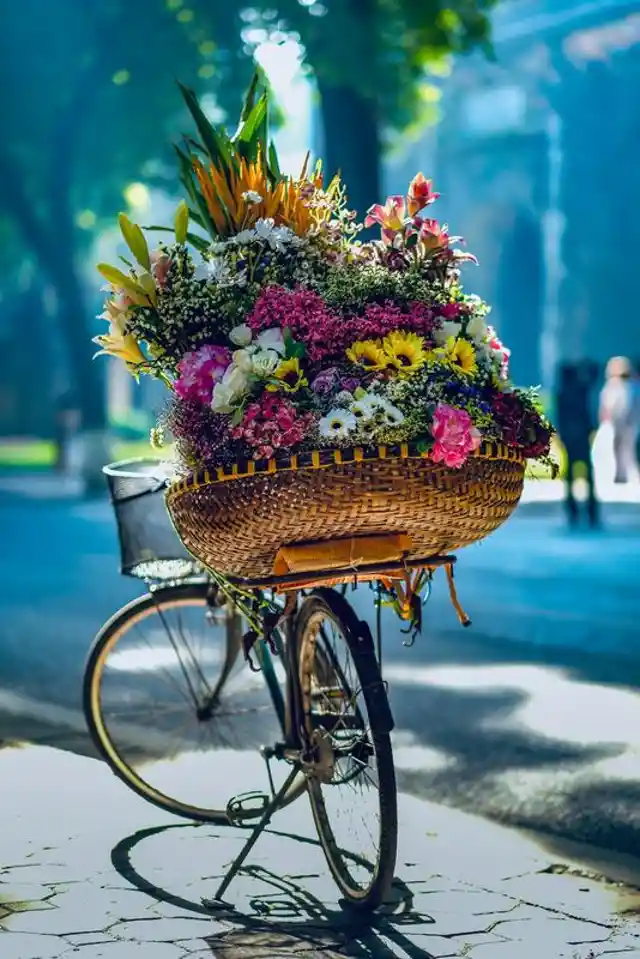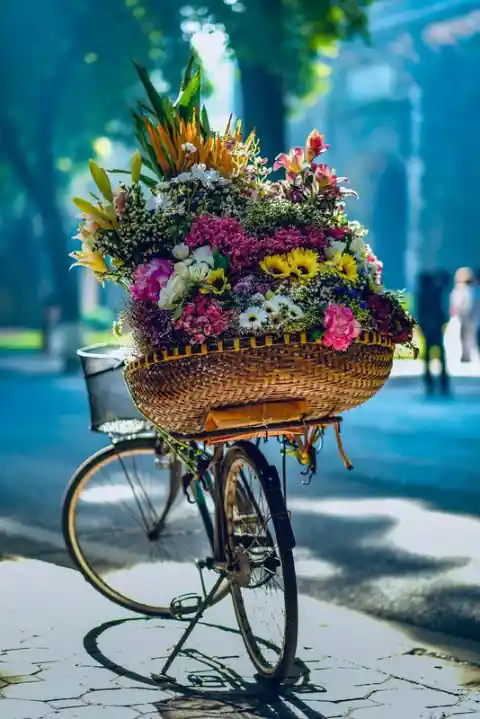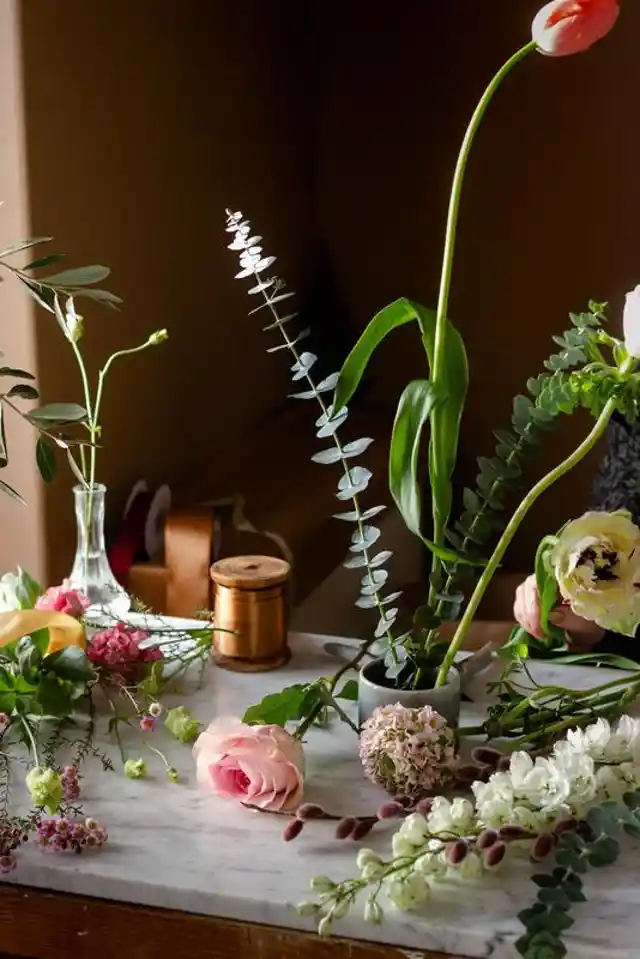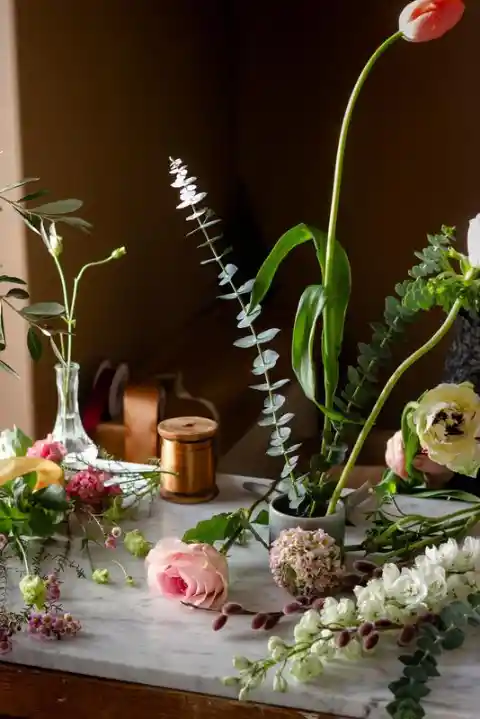Ikebana ("living flowers") is one of the traditional Japanese arts and, as with calligraphy, archery, or a tea ceremony, you can spend your whole life doing it to become truly proficient at it.


There are several schools within Ikebana. The Ikenobo school has existed for over five hundred years and has various movements, such as 'Rikka' (standing flowers), with grandiose arrangements in which each element has a landscape and symbolic meaning (white chrysanthemums symbolize a river, for example). 'Sogetsu' is a modern form of Ikebana, this school was founded by a sculptor and uses wood, iron, and stone in addition to flowers and plants. 'Ichigo' emphasizes wonder at the beauty of nature, and offers plenty of room for your creativity. And if you see an arrangement in a low bowl, then the maker probably belongs to the "Ohara" school - which also has its own rules and symbols.
But however different the schools are, they all share the element of attention, nature, and balance, in life. You could think about an arrangement as you would about making a haiku: it revolves around rhythm, silence, the omission of superfluous fuss, and, last but not least, the seasons. And all this within certain rules - and it is precisely this restriction that gives room for creativity.


Lessons in Japanese flower arranging
Use different materials. A beautiful branch from the garden, decorative grasses, mosses, flowers, and a branch with berries, you can use it all. Use not only the flower but also the leaf.
Vary the length. This also has a symbolic meaning: three heights in an arrangement can refer to the earthly (low), the realm of man (middle), and the divine (high).
An ikebana arrangement is not only about the flowers and plants, but also (perhaps especially) about the space between them. From time to time, look at your arrangement from a distance, as if you were a sculptor. If necessary, you can prune a little here and there, or gently move a branch outside to adjust the shape slightly.
Also, make room for "the beauty of imperfection. For example, use not only flowers in bud but also a wilting flower.
An ikebana arrangement is asymmetrical. Also use odd numbers (not two branches but three, not four flowers but one).
Use plants and flowers of the season. In spring budding leaves and blossoms, in winter bare branches with some berries.
Minimalism: with just a few branches you can make a nice arrangement. When you're done, put the vase in a quiet, tidy place in the house.
In essence, ikebana is actually "the way of flowers": it is a Buddhist path that ultimately leads to enlightenment and wisdom. You don't have to walk that path all the way, of course, but you can think of being busy with natural materials as a Zen moment.